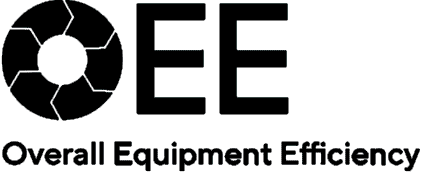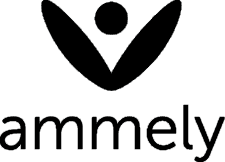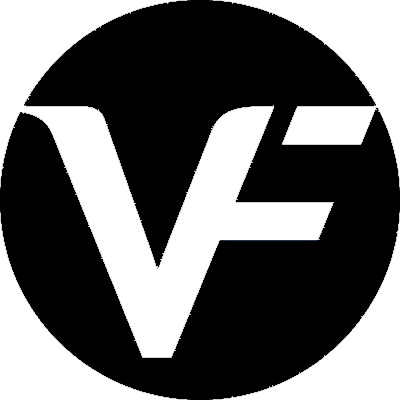On Page SEO Services.
Crawl efficiency
Scalable Campaigns
Are you starting a company with restricted capital? That’s no problem. Wish to check our process prior to you increase the budget? Sounds great to us. At Amida, all projects are structured for seamless scalability. We’ll put our design to the test, and you’ll see your revenue skyrocket.
Real-time Analytics
The waiting game is over. When you start an SEO campaign with us, you get access to Amida Dasboard, a real-time reporting platform that puts all the SEO data at your fingertips. Log in at any time of day and see up-to-date keyword rankings, organic traffic growth, and more.
Obstacle Detailing
As soon as the obstacles are uncovered, Amida outlines the barriers and supplies tailored suggestions to address them based upon what we know about your site, CMS, and server.
On Page SEO from a reliable partner
While many website owners understand the value of search engine optimization, the fact that over 200 constantly evolving elements go into determining a website’s ranking makes it clear why there is a lot of confusion about the process.
For many years, the dreaded “algorithms” have been continually evolving. Some ranking aspects have become obsolete, while others have been added. It can be easy to lose track of what works and what doesn’t.
Fortunately, there are certain pillars of optimization that remain the same, and the first step to ranking is developing an exceptional website that focuses on solid on-page optimization.
While many talk about off-page SEO and link building, at Amida, on-page optimization remains a fundamental and essential part of the SEO process. After all, if on-page optimization is not done properly, all other efforts are useless.
What is SEO?
Search engine optimization is the process of implementing certain practices on your website, both internally and externally, that increase natural online search engine traffic to your pages.
What are on page SEO services?
On Page SEO describes the SEO actions taken to improve your website’s visibility in online search engines such as Google or Bing. These services can consist of content optimization, keyword research and header tag optimization.
How long does it take to see results?
This answer depends heavily on the keywords you want to target and your current content. If you have keywords with low competition and quality content, on-page optimization can bring quick results. If your keywords are highly competitive and you have poor content? Then the process can take a year or more.
Contact us
Our Agency is driven by passion!
We deliver business-relevant results at breakneck speed.
Call Us: +4934292 529 027
On Page Optimization
Optimization
- Page Title Formatting
- Page Titles Missing
- Page Title Too Short/Long
- Page Title Duplicated
- Page Titles Missing
- Meta Descriptions Missing
- Meta Descriptions Too Short/Long
- Meta Descriptions Duplicated
- Sub Optimal Header Hierarchy
Keywords
- Keyword Analysis
- Competitive Analysis
- Keyword Search Volume Too Low
- Domain Authority Comparison
- Long Tail Keyword Selection
- Subpage Keyword Hierarchy
- Keyword Frequency
- Incorrect Anchor Text Linking
Responsive
- Keyword Analysis
- Low page Speed Score – Mobile
- Generic Desktop to Mobile Site Redirection
- Switchboard Tags Vary
- HTTP Header – Same URL Vary
- HTTP Header – Different URL
Indexation
- Robots.txt File Missing
- Robots.txt File Blocking Valuable Content
- XML Sitemap Missing or URL not listed in Robots.txt
- XML Sitemap Lists pages blocked by the Robots.txt
- XML Sitemap is Malformed/Incomplete/Outdated
- XML Video and Image Sitemap Missing
- Low Page Speed Score
- Desktop Webmaster Tools Not Available
- Improper Canonical Tags Robots Meta Tag
URL Structure
- Unnecessary Sub-Domains
- Uncesessary Directories
- Generic Directory Structure
- Dynamic URL Issues
- Tracking Parameters in the URL
- Session IDs in URL
Linking
- Internal Link Issues
- Sub Optimal Anchor Text
- Missing Breadcrumbs
- Malformed Breadcrumbs
- Breadcrumbs Missing Schema
- No Consumer Facing Sitemap
- Unnescessary Internal No-Follow Links
- Javascript Navigation
- Images Used in Navigation
- Flash Navigation
Redirects
- Unnecessary Redirects
- 302 Redirects
- Meta-Refresh Redirects
- Javascript Redirects
Site Errors
- Site Contains Page Errors
- Broken Page Links
- Broken Image Links
- Missing Custom 404 Page Error
- Page Does Not Return 404
Amida’s team of SEO experts works closely with each client to ensure their SEO success. Our SEO campaigns are based on verifiable, results-driven thematic keywords to help you outperform the competition and feel confident in working with us.
People buy into the leader before they buy into the vision.
John C. Maxwell
About us
A Dedicated SEO Agency That Achieves Impressive Results
We are not an 0815 SEO digital agency. Amida is a search engine optimization agency that does one thing, and we do it exceptionally well. Every employee of the Amida team, from A to Z, in every department of the company, is rigorously trained in our SEO principles and best practices.
And why? Because we believe it makes us the best SEO marketing agency for our clients. Does our growing portfolio of satisfied clients confirm this? We believe so!
Best Practices for Using Correct Keywords
A good keyword research and the use of an appropriate keyword density are not enough when it comes to a real SEO onsite optimization. The correct use of the keyword throughout the post is also important. This is all about structure and using the main keyword in strategic places. There are a few places where the main keyword must always appear:
- In the title
- In the URL address (this should automatically take place if your URL structure is properly optimized with your titles)
- In the first paragraph (earlier is better but not an absolute necessity)
- The very last sentence of the post
Assuming the post is a good length, the main keyword should ideally also show up in one of the subheadings and a few times throughout the text if it appears naturally. In the end, make sure that the keyword density in each post is at or below 2%.
Best SEO Practices for Page Layouts
The design of an article plays a big role when it comes to search engine optimization on a website, and a few small changes can often lead to big optimization benefits. One thing you should always keep in mind is usability. No one likes huge amounts of text, and you want each post to be as interesting and attractive as possible. Don’t forget that the average time each visitor spends on the site is an important SEO factor that Google and other search engines also evaluate. So easy to read/skim content with great multimedia placement can make a big difference in increasing typical dwell time while improving rankings as a result.
Each post must contain excellent, clear images (not pixels) with captions. Subheadings, short paragraphs and bullet points are always an excellent concept, as are occasional bold, highlighted words to make the text stand out (where appropriate). You want all of these posts to be as interesting as possible, well-formatted, and easy to read.
Best SEO Practices for Using Tags
Tags come in 3 main forms for your content, and you should make sure you follow best practices for all of them. The first is the title tag. If you’re using WordPress, you don’t have to worry about the post title. However, if you are using subtitles in your content, you should make sure that they are not only bolded, but that they are surrounded by actual header tags for an extra SEO boost. This helps tell search engine spiders that these words are particularly important in relation to the post.
Meta tags used to be an important part of on-page SEO, but that is no longer the case. There is no benefit to stuffing them full of keywords, but a site can be penalized for not having meta tags or replicating content for meta tags. You should avoid these penalties at all costs.
Finally, every image must have alt tags that indicate what the image is about. These should not be keyword spam or lists of keywords, but a brief description of what the image shows. A simple keyword is fine if it directly relates to what is in the image.
Improving these tags on each page is something that all the major search engines like to see.
Best SEO Practices for High Quality Content
Google has been saying for years that the most important element for them is quality content. Now, more than ever, they have the opportunity to back up that statement. So what is “quality?” Although this term is not entirely clear, there are a few specific characteristics that good content has in common (in the eyes of the online search engine).
- Are written by a native speaker
- Are informative and carry authority, yet are easy to read
- Flow well and with a good writing style
- Are well organized
- Are 100% original (no duplicate content – which creates a penalty)
- Link to relevant reputable resources to support information
- Are as long as possible without sacrificing quality
In a sense, the terms ” excellent ” or ” good quality ” are subjective. The basics listed in this section provide all the information needed to understand what Google and the other major search engines are trying to find in a really good post or page. If you start with this structure and stay true to the idea of creating the best possible online resource for the reader, you’ll be well on your way to developing the kind of content that search engines want to see. These onsite SEO services and great content will make search engines want to rank you higher down the line.
Best SEO Practices for Updating Site Content
Updating content shows search engines that it is timely, that you continue to add value to your site, and that you are building trust and authority with search engines. Both factors are cited as important for future SEO work and ranking. Updating old posts is usually even much easier than writing new ones because the heavy lifting has already been done. You simply add a bit more content, make sure it’s formatted properly, add some on-page optimization tips, and then reap the benefits.
Keyword Research in On Page SEO
To understand the theory and reasoning behind Amida’s thematic search query, it is important to know what a bad keyword study looks like. The most common causes of poor keyword analysis are when an SEO “expert” opens the Google Keyword Planner, enters a generic term, performs a search, exports the list provided by Google, and sends it to the client as “done.”
First, where is the research? Second, are these keywords relevant or topical to a website’s offering or its product? Analyzing search queries along these lines does not take the user into account at all, so there is a risk of overlooking the actual keywords that users are searching for.
Amida takes a different approach to search query analysis. When we start analyzing search terms, we create keyword styles based on specific URLs that could better drive traffic and convert website visitors. Based on these topics and URLs, we look for relevant long-tail keywords that have a certain volume and keyword difficulty and associate these keywords with URLs. This is not only a more effective way to increase a website’s rank and drive traffic to the site, but also the way we begin to create the keywords and phrases we will target during an SEO project.
By performing a keyword analysis, we ensure that an SEO campaign is successful by making sure that no keyword cannibalization is possible and that a website does not rank for completely irrelevant or insignificant keywords.
Contact us
Our Agency is driven by passion!
We deliver business-relevant results at breakneck speed.
Call Us: +4934292 529 027




